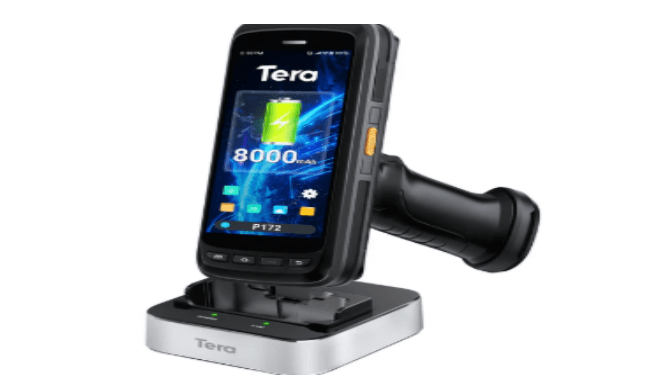Mobile Computers: Shaping the Future of Education

Introduction
Today’s educational landscape is undergoing a significant transformation, driven by the increasing integration of mobile technology. Traditional models that emphasized memorization are giving way to dynamic approaches that prioritize skills such as reading, sharing, listening, and doing. Mobile computing devices are central to this evolution, creating efficient learning models where students actively participate in their education.
The Rise of Mobile Learning
Mobile learning, or m-learning, harnesses portable computing devices like tablets and laptops connected via wireless networks. This extends learning beyond the traditional classroom, offering flexibility and new interaction opportunities for both instructors and learners. Contemporary m-learning emphasizes learner-centered pedagogies that promote flexibility and communal engagement.
Benefits of Mobile Learning
Mobile learning offers several key advantages that contribute to its growing prominence in education:
- Increased Student Engagement: Mobile technology can significantly boost student participation by stimulating interest, creating a safe and inclusive environment, building a classroom community, and providing multiple means of participation.
- Teaching Specific Skills and Concepts: Mobile learning platforms are useful for teaching complex concepts and equipping students with essential digital skills relevant to their future professional careers.
- Analytics for Improved Learning: By providing instructors with valuable data, including formative assessment results, m-learning helps inform teaching strategies and address knowledge gaps effectively. Students can also collect and analyze data, gaining practical, hands-on experience.
- Increased Efficiency: Mobile resources help students get through content more quickly. It improves the speed of feedback and supports critical thinking.
Teaching Goals Supported by Mobile Learning
Mobile learning facilitates meeting key teaching goals by fostering student engagement, skill development, data-driven instruction, and resource efficiency. Instructors employing m-learning strategies have reported improvements in these crucial areas:
Student Engagement Strategies
Instructors have found that m-learning helps in stimulating student interest and motivation. By using devices where students can share their answers, instructors heightened student involvement in the material, prompting them to engage more actively in discussions and pay attention to explanations. Creating a safe learning environment through mobile technology also fosters engagement among students, particularly those who feel more comfortable participating anonymously.
The sense of community is improved, making large classrooms feel more connected, especially with instant messaging platforms that help students feel recognized. Finally, instructors use mobile technology to offer students more opportunities and multiple means to participate in the course.
Specific Skills and Concepts Strategy
Instructors utilize m-learning to educate students with specific digital skill sets, enabling them to develop competitive advantages valuable for future advancement. By emphasizing concepts, instructors make use of visual representations to make concepts relevant. Skills and concepts are made clear by applying digital skills to real-world problems.
Analytics Strategy
The use of mobile technology creates unique opportunities for analytical practice, data collection, and overall data analysis. By leveraging student-generated data, educators can spark meaningful discussions and refine their teaching practice.
The integration of real-time formative assessments allows faculty to understand knowledge gaps and provide on-the-spot feedback and support to students.
Efficiency Strategy
The efficient design can improve teaching productivity. Through the use of a geographic locating system, the simplified and effective method students save instructional time. Mobile technology has led to quick feedback cycles, resulting in improvements in the accuracy and clarity of student work.
Read also: The Impact of New Educational Technologies on Digital Game Design
Takeaways from Mobile Learning
Mobile technology offers several takeaways for improvement in teaching environments. The benefits include:
- Building and maintaining classroom community by creating safe spaces with inclusive participation.
- Providing opportunities for increased engagement to enhance student interest and motivation.
- Making concepts and topics clearer through mobile technology.
- Developing emotional, cognitive, and tech-based skills for future careers.
- Actively engaging students in data generation, collection, and analysis.
- Helping faculty adapt to student learning gaps in real-time.
- Providing an environment of feedback and learning.
- Expediting students’ grasps on complex course content.
Considerations for Mobile Learning Integration
Studies show that students benefit from safe spaces and improved interest. Most students now have mobile tools. These devices can be utilized to support learning. It is essential to design teaching strategies with mobile tools in mind. Mobile learning promotes equitable access. Also, students and faculty gain confidence.
However, successfully integrating mobile devices into education requires careful consideration of potential challenges and providing appropriate solutions. These include issues such as technology access equity, content quality control, distraction mitigation and technical reliability.
The Future of Education With Mobile Computers
As technology continues to intertwine with learning, mobile computers are increasingly shaping educational paradigms. With mobile technology, our education approach moves outside the classroom for learning in a virtual environment. Knowledge sharing becomes situated, personal, collaborative, and lifelong. By harnessing the potential of mobile technology, students gain knowledge applicable for years to come.




